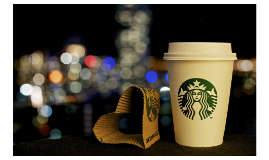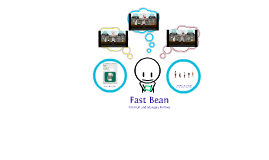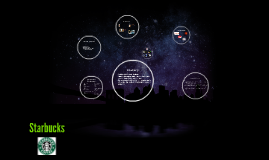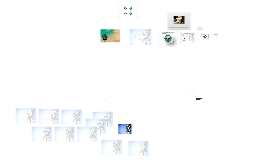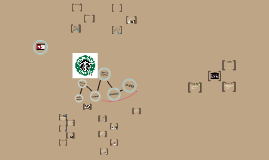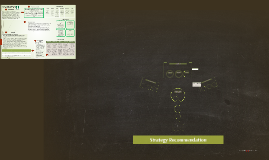Starbucks Presentation
Transcript: Lucy Lee Helm executive vice president, general counsel and secretary Deverl Maserang executive vice president, Global Supply Chain Scott Maw executive vice president and chief financial officer Sharon Rothstein global chief marketing officer Arthur Rubinfeld chief creative officer and president, Global Innovation and Evolution Fresh Retail Craig Russell executive vice president, Global Coffee Matthew Ryan global chief strategy officer Blair Taylor chief community officer Vivek Varma executive vice president, Public Affairs Annie Young-Scrivner executive vice president and president, Teavana Frappuccino Corporate Structure StarJiffy Competitors Total Revenue: $14.6 billion Total Value: $4.48 billion Starbucks is a wholy owned company with no sub companies 20,737 stores WW 11,910 stores in the U.S Employs 160,000 (as of 2013) Headquarters in Seattle, Washington History Starbucks Founded March 30, 1971 in Seattle, Washington Funded by English teacher Jery Baldwin, history teacher Zev Siegl, and a writer Gordon Bowker at the University of San Francisco The three were inspired to sell high-quality coffee beans and equipment by coffee roasting entrepreneur Alfred Peet after he taught them his style of roasting beans Total stores: 20,519 * (as of March 30, 2014) (0_o) Interesting Facts car maintenance oil change 3 Departments Car Maintenance Global Technology (IT) Costumer Service tire repair Vertical Merger Merging so that people who are getting their oil changed can enjoy a coffee or tea while they are getting their oil changed Opposed to sitting and doing nothing Stock Quotes Company Details FAQ's Recap Named after after the first mate in Herman Melville’s Moby Dick coffee Products Late Is there an actual product? no, this is a servicing business So, if I just want Starbucks do I have to deal with everything going on in an oil changing shop? no, Starbucks stores will be placed in Jiffy Lube stores. There will still be separate Starbucks stores Does Jiffy Lube only do oil changing? no, they also do brake repair, fuel services, tire replacing, etc. Will the Starbucks still have free wifi? Yes If I'm getting my car repaired or my oil changed, will it come with a complementary coffee/late/tea as opposed to if I'm just going there not for my car? No, prices are separate from car repair Do I have to be getting something done to my car if I want to go to the Starbucks Starbucks is still for anyone to enter at their own will, it is merged with Jiffy Lube for the convenience of people already getting their car done. Founded March 30, 1971 in Seattle, Washington Total Revenue: $14.6 billion Total Value: $4.48 billion Cost per share : $ 72.38 High/Low: $ 82.50 / $ 67.93 Cost per share : $ 72.38 High/Low: $ 82.50 / $ 67.93 Yearly/Quarterly dividends: $ 1.04 / $ 0.26 Total Stocks Purchased: 554 million Logo is inspired by the sea–featuring a twin-tailed siren from Greek mythology. Howard Schultz chairman, president and chief executive officer Troy Alstead chief operating officer Marissa Andrada senior vice president, Global Partner (Human) Resources Adam Brotman chief digital officer Cliff Burrows group president, U.S., Americas, and Teavana Michael Conway executive vice president, Global Channel Development John Culver group president, Starbucks Coffee China and Asia Pacific, Channel Development and Emerging Brands Curt Garner chief information officer Jeff Hansberry president, Starbucks China and Asia Pacific brake repair Starterd in 1979 Steven Ledbetter president of Jiffy Lube International Jiffy Lube is the largest system of franchised service centers in North America and is consistently ranked as one of the top franchising opportunities for entrepreneurs Headquartered in Houston, Texas JLI is a wholly owned Subsidiary of Shell Oil Company 2,000 franchised service centers in North America






